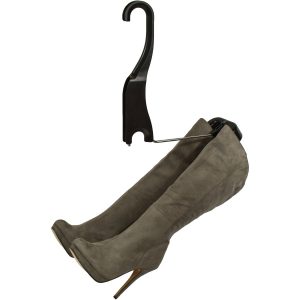Keeping your boot leather alive for longer
Leather boots — whether you wear them working, walking, or while socializing — you want to be fashionable and comfortable at the same time. You bought them because leather looks great, wears well, and is a timeless style choice.
They were worth the money you paid. But, having invested in great boots, you want to make sure they stay that way. Here are some boot care tips to help you keep them in gorgeous and supple condition.
Leather has a built-in advantage over other materials for footwear: it’s skin, and it’s already breathable and nearly waterproof, particularly when properly treated. The treatment process is important. It’s likely that your boots came with care instructions. If you kept them, you should pay attention to them. Don’t toss those instructions into the recycle bin. Different types of leathers need different types of special care in order to look and perform their best.
What you need to protect leather boots from rain damage
Buy a good leather conditioner like Nikwax Waterproofing Wax. Apply it carefully to your boots. Then, re-apply it regularly. You want to make sure that your boots do not absorb water. This is because, while leather is already fairly waterproof, the wetting and drying process prematurely ages it. This leaves you with worn boots. Some people relish leather with a patina of wear, but most people want their boots to look new for as long as they can. A regular use of a leather conditioner will extend your enjoyment of them by years.
Mud, dirt, dust, and grime don’t have to ruin your boots
If your boots get dirty or grimy, brush them off with a stiff brush. Make sure to get all the nooks and crannies. If they are both dirty and wet, make sure to stuff them with newspaper to maintain their shape, and absorb moisture while they dry, and then brush off the dirt. Use a leather cleaner or a mild soap like glycerin or Dr. Bronner’s castile soap to clean them. Then, wipe them off with a damp cloth and leave them to dry at room temperature. Do not place them by a heat source. If they dry too quickly, the leather may be damaged and the heels of the boots may become loose.
Alternatively, if they dry too slowly, mold or mildew could take hold. Stuffing your boots with newspaper provides an added benefit of speeding up drying time to avert the risk of mold, mildew, and other nasty things growing. You can clean scuff marks from boots with baking soda and water. Dip a damp cloth in some baking soda and rub it gently over the scuff marks, then wipe them clean with a damp cloth and buff them with a dry towel.
Removing rock salt stains from leather
To get salt stains out of boots, let them dry completely first. Again, it’s wise to stuff them with newspaper or use an insert to help maintain their shape while drying. Brush off any obvious dirt and salt, and then clean with a leather cleaner. To shine the boots afterward, use a vinegar-and-water solution of one tablespoon vinegar to one cup water to wipe them off, and then apply saddle soap. Saddle soap contains only five ingredients: water, castile soap, beeswax, pure flake lye, and pure gum turpentine. If you are feeling adventurous and pioneers, you can even make your own saddle soap! Because it’s made of oils and waxes, it works very well to condition natural materials like leather.
Protecting boots are cheaper than repairing them
With all valuables, including leather boots, an ounce of prevention is worth a pound of cure.
It’s best to take good care of your boots from the time you purchase them and to make sure they are stored correctly in a clean and organized space. A storage solution like Boot Butler will also help maintain your leather boots’ shape until it’s time to wear them again. This also helps keep your boots free of mold, mildew, and odor by ensuring that they air out properly. If you follow these basic care tips, your leather boots should give you years, perhaps even decades, of enjoyment. That’s the beauty of leather and the reason people choose it over man-made or even specially engineered materials.



Trackbacks/Pingbacks